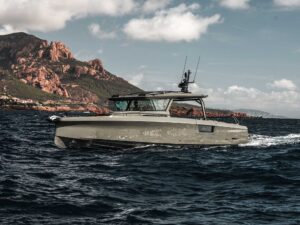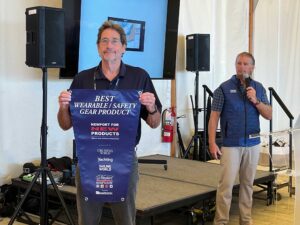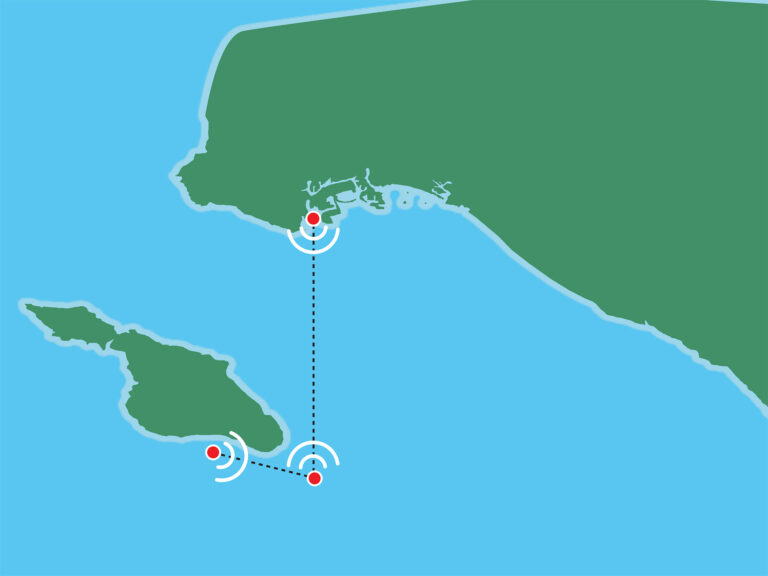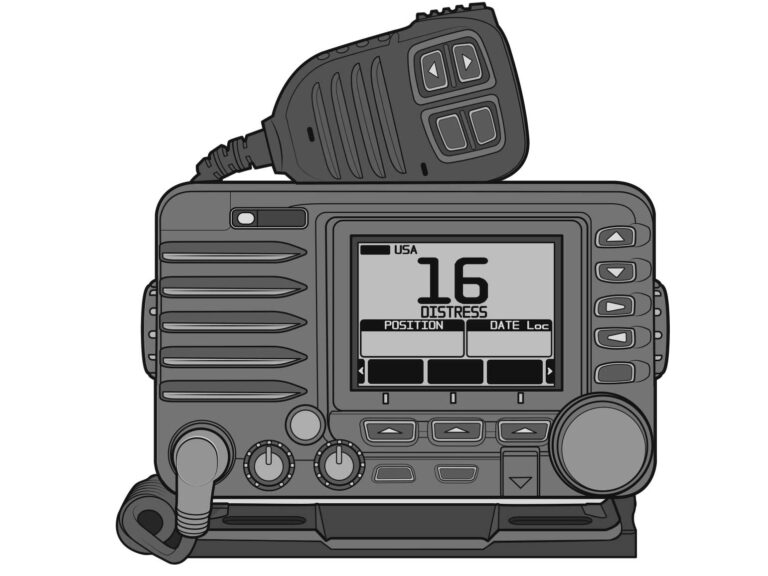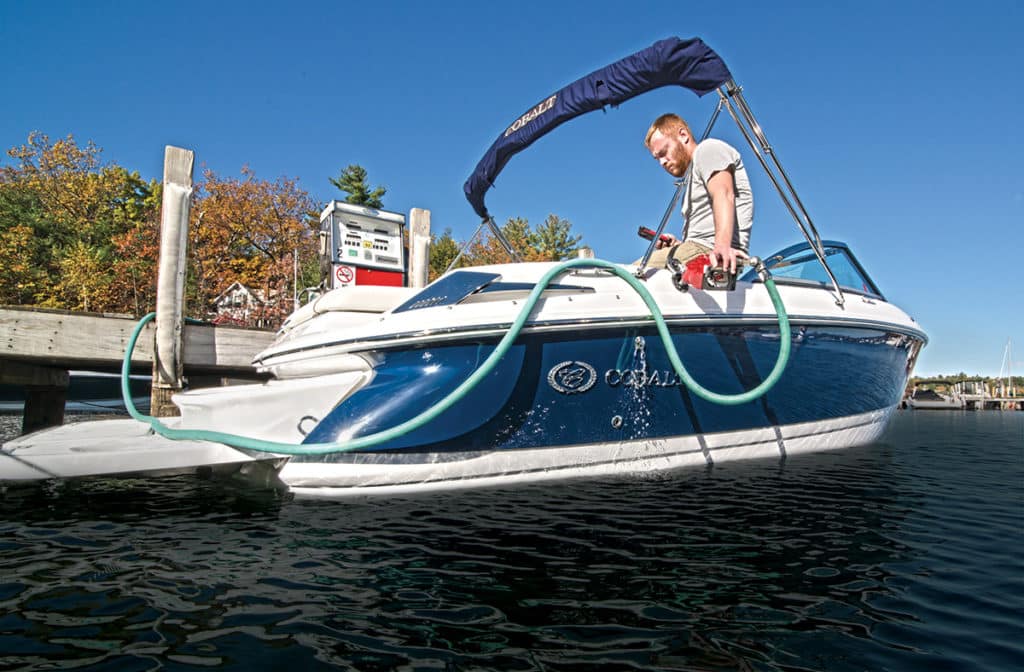
In the water, they look like shimmering rainbow patterns that to the unaware might appear beautiful. They are not. Those tie-dye patterns are the result of foul-smelling fuel from spills or oil from bilges that plague busy marinas. “Any discharge of oil or fuel, even a drop, that creates a sheen, sludge or emulsion on the surface or beneath the water is considered harmful and requires a call to the National Response Center,” says Chief Luke Potter, who heads the U.S. Coast Guard Sector Boston’s Incident Management Division.
Fortunately, it’s easy to prevent or reduce a spill with products that make fueling and bilge discharge cleaner. We talked to experts about oil spill reporting, picked up tips to head off common causes, and learned how boat owners can lessen the impact if they do spill fuel or oil.
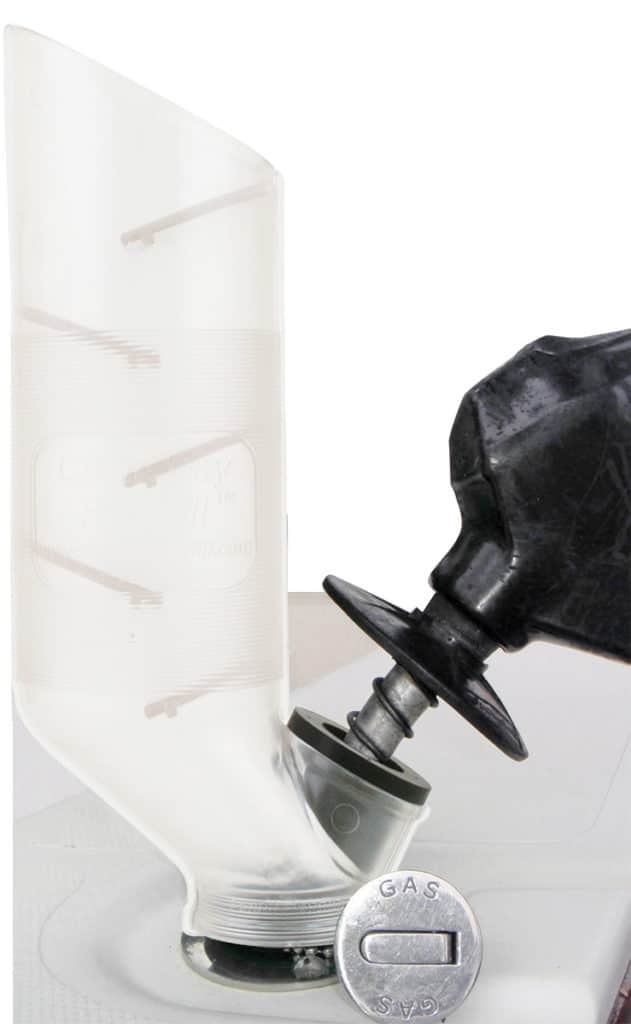
Stopping the Spills
For recreational boaters, the most obvious source of fuel spills occurs at the fuel dock. There are tools to prevent these minor spills. To catch fuel before it hits the water, Centek Industries (centekindustries.com) makes a FuelKleen collar that surrounds a fuel nozzle with loose granular filler inside a cloth bag, which contains lots of Mycelx-treated surface to absorb fuel. The Clean Way Fuel Fill from Scandvik (scandvik.com) seals around most fuel nozzles and also seals atop most boats’ fuel fill. The clear funnellike top lets air out while baffles divert fuel back down into the tank.
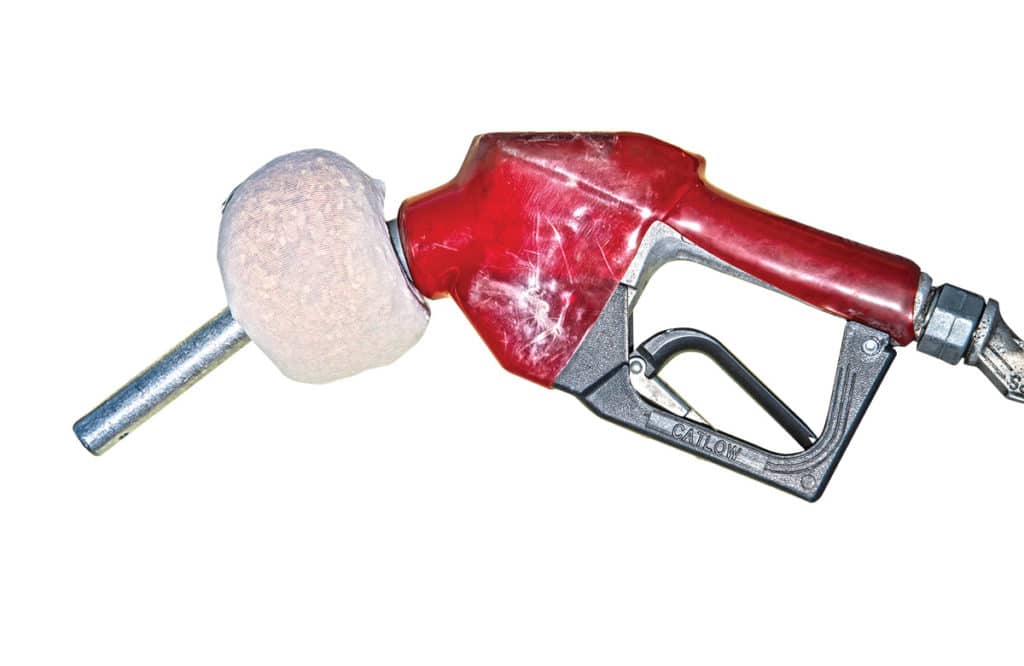
For boats that prove difficult to fill, check tank vents. Make sure the vent fitting hasn’t been clogged by wax, dirt or insect activity. Then check the hose.
If fuel backs up through the fill, look for a kinked vent hose or clogged vent fitting. Also try shifting weight while fueling so the vent fitting is at the highest point in the tank.
“The vent hose should loop up and back down right where it enters the boat,” says Tim Moore, a service technician at Goodhue and Hawkins Navy Yard on New Hampshire’s Lake Winnipesaukee (goodhueandhawkins.com). This helps keep water out of the tanks. “From there, you want a nice smooth run down to the tank,” he adds. “Fuel puddles in any low spots. When you’re filling, air flowing through that vent hose pushes those puddles right out of the vent and into the water.”
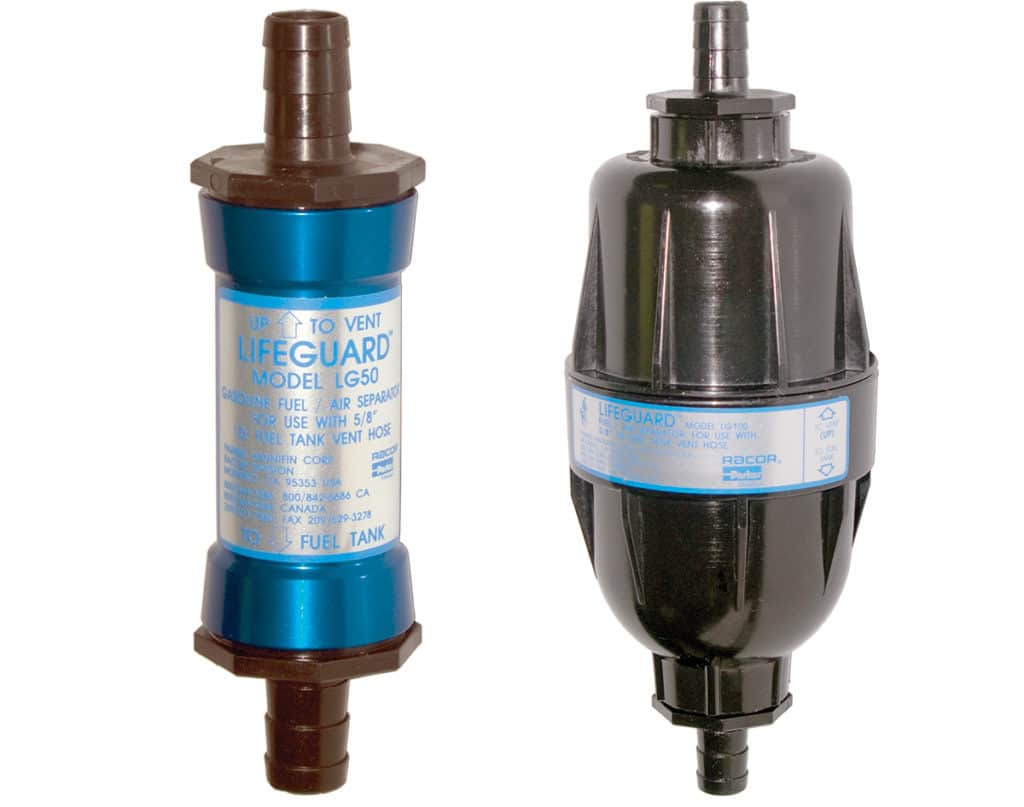
Installing Racor’s Lifeguard fuel/air separator will trap fuel but release air from the vent line (parker.com).
Bilges are another common pollution source. “So many boaters think it’s OK to pump nasty, oily bilgewater into the environment,” Potter says. Head off spills with oil-absorbing towels beneath engines and oil-absorbing bilge socks that skim bilgewater. (Both are available from Star brite.) Centek’s BilgeKleen filter system passes a pump discharge hose through a Mycelx-treated filter.
“It’s really intended to polish bilgewater,” says Bill Arwood of Centek. Note that it’s not wise to install anything in a bilge-pump line without an unfettered backup pump nearby.

Fuel leaks are also a fire hazard. “Most filter fittings are tapered pipe thread. They’ll crack if overtightened,” warns Moore. Leaky filters typically suck in air and cause engine issues, Moore says, and some drip fuel when the engines are off.
Cracked fuel lines also leak, but leaky tank-top fuel gauge senders are more common. “When you fill the tank to the top,” Moore says, “the sending unit is under pressure. It can leak a lot of fuel into the bilge.” Fortunately, a new gasket and sometimes larger-diameter screws quickly fix most sender leaks.



Sunken boats also cause many spills. “My boat won’t sink,” you say. It happens more often than you’d think, typically while a boat is tied up unattended in its slip. “It seems boats often sink at the dock after someone has been working on bilge pumps or through-hull fittings,” Potter says.
Storms also cause dockside sinking, and wind and waves spread spilled oil. “Before heavy weather, make sure your lines are secure, your bilge pumps are operational, and your batteries are charged. That would keep a lot more boats afloat and go a long way toward preventing pollution,” Potter says.
What if your boat does cause a major spill? Quick spill response is key. The Coast Guard is the first responder. The sooner you call, the better.
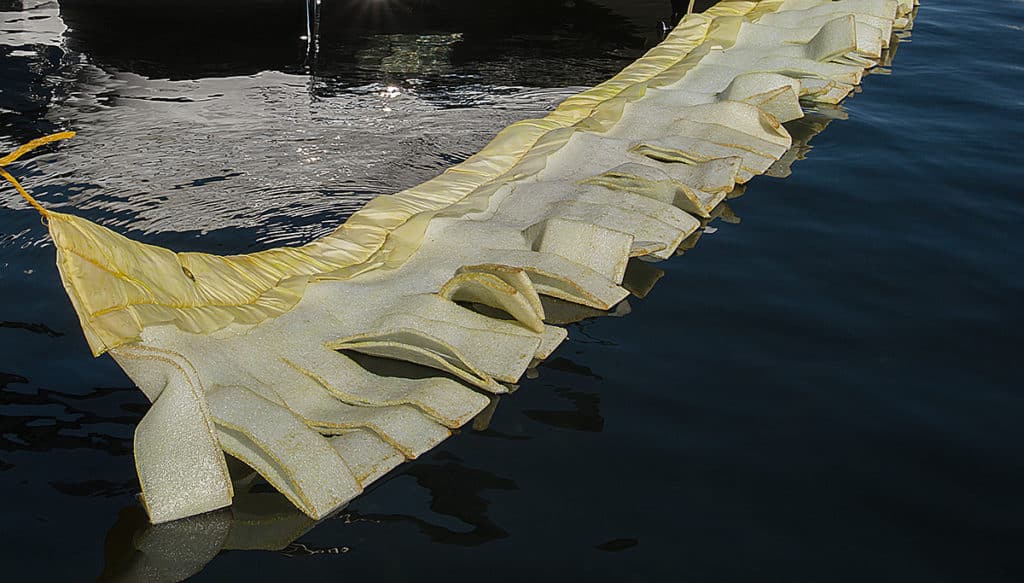
Reporting the Spill
At the National Response Center, the Coast Guard’s spill hotline is 800-424-8802. This agency will want to know what was spilled, the estimated quantity and size of the sheen, and whether the spill is continuing. That information is passed to a regional office, such as Potter’s Coast Guard office in Boston, and state environmental agencies.
“A Coast Guard pollution responder makes a decision on whether it warrants sending an investigator to the scene,” says Potter. A continuing spill, an unknown source, or an incident likely to require clean up are triggers — Coast Guard investigators went to about 85 percent of the 136 reports forwarded to Boston last year. If the Coast Guard doesn’t visit, the “responsible party” submits a written or telephone statement.
“There will likely be some enforcement action even if we determine no clean up is necessary,” Potter says. Depending on how much fuel, the circumstances of the spill and a boater’s spill history, most boaters get off with a warning. A handful of cases garner a citation beginning at $50 up to $40,000 per day based in part on what is deemed “adequate to compel future compliance and diligence,” Potter says.
More importantly, not reporting a spill and getting caught is a class-one civil penalty, involving a Coast Guard hearing officer and potentially much higher fines. Potter also says spraying soap on a sheen further harms the environment, and using dispersants can actually result in jail time.

Cleaning Up
If you find yourself on the hook for a major spill, clean up might be the biggest cost. “It could easily be a few-thousand-dollar response,” says Mark Mucciaccio, operations supervisor for New England-based Cyn Environmental Services (cynenv.com). Cyn handles fuel spills on the water. For a small spill, Cyn typically sends a four-man team with a boat. They contain fuel or oil with a hydrocarbon-absorbent “sausage boom,” and then collect it with absorbent pads or a vacuum truck that skims oil from the water’s surface. The team also cleans the oil-stained waterlines of affected boats, usually right in the marina.
A civilian licensed site professional might also be required. If that sounds expensive, consider the cost of delay. “As it sits on the water, that oil emulsifies. Absorbents won’t pick it up. We have to manually scoop the oil off the water,” Mucciaccio says, which increases man-hours, and as the slick grows, more neighboring boats and the shoreline might require cleaning.
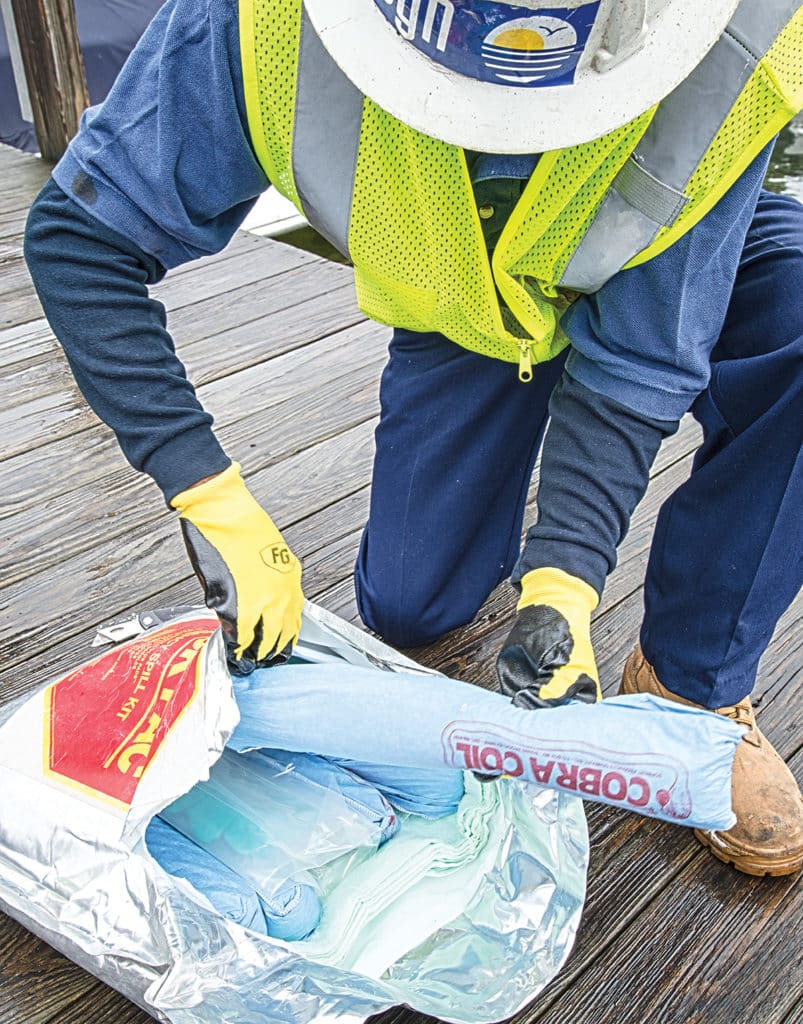
The Oil Pollution Act of 1990 — passed after the Exxon Valdez accident — caps total cleanup costs at $854,400 or $1,000 per gross ton (about $250 million for a supertanker), according to Michael Pellerin, BoatU.S.’s vice president of underwriting. “Some insurance policies don’t mention spill coverage or include it under general liability, which leaves the boat owner financially vulnerable,” Pellerin says.
How do you protect yourself? “Get coverage up to that amount specifically for spill liability in addition to the general liability limit,” Pellerin says.
“I see so many boaters opt out of that insurance protection,” Potter says. “You’re responsible for any damage caused by the fuel in your tanks.” When boat owners won’t or can’t pay, the Oil Spill Liability Trust Fund does, but, Potter says, “The government can come back and charge the boat owner three times the cost of clean up.”
Containing a spill can mitigate or even eliminate cleanup costs. In a sinking situation, gasoline dissipates quickly while diesel lasts longer, but the real danger is the lubrication. “That heavy oil is what you’re really worried about. It floats right out of engine dipsticks,” says Capt. Ken Factor of Sea Tow Central New Hampshire. What to do if your boat is sinking or sunk in its slip?
“Block air intake and exhaust vents with life jackets or beach towels,” Factor says, to trap oily water inside sunken engine rooms. “Tie life jackets together, or string a garden hose through swim noodles and lay towels over it for a makeshift boom.” Factor carries a floating containment boom aboard his Sea Tow vessel that helps lessen cleanup costs.

Centek’s Versimat, for instance, is a 48-square-foot oil-absorbing cloth attached to a 10-foot floating boom. “The Mycelx coating repels water but actually bonds to hydrocarbons,” says Bill Arwood of Centek. “You can saturate that pad with fuel or oil, but you can’t squeeze it out.” Two or three Versimats stow easily aboard yet quickly contain a small diesel spill before it spreads, and oil-absorbent towels soak up fuel within that containment boom — 10 square feet of Mycelx-treated material absorb about 40 pounds of fuel or oil.
Gasoline shouldn’t be contained to avoid concentrating explosive vapors. Let small gasoline spills dissipate, or collect them with oil-absorbent towels and dispose of them carefully, since they’re flammable.
“If you have a spill of any kind, even if you clean it up, marina personnel are your first point of contact,” says Steve Durgan, general manager of Goodhue and Hawkins Navy Yard. “They know how to respond to a spill and how to dispose of those oily cleanup materials.”
Nobody wants a fuel or oil spill in the waters in which they boat. But if it happens, act quickly and responsibly to protect the environment and your wallet.
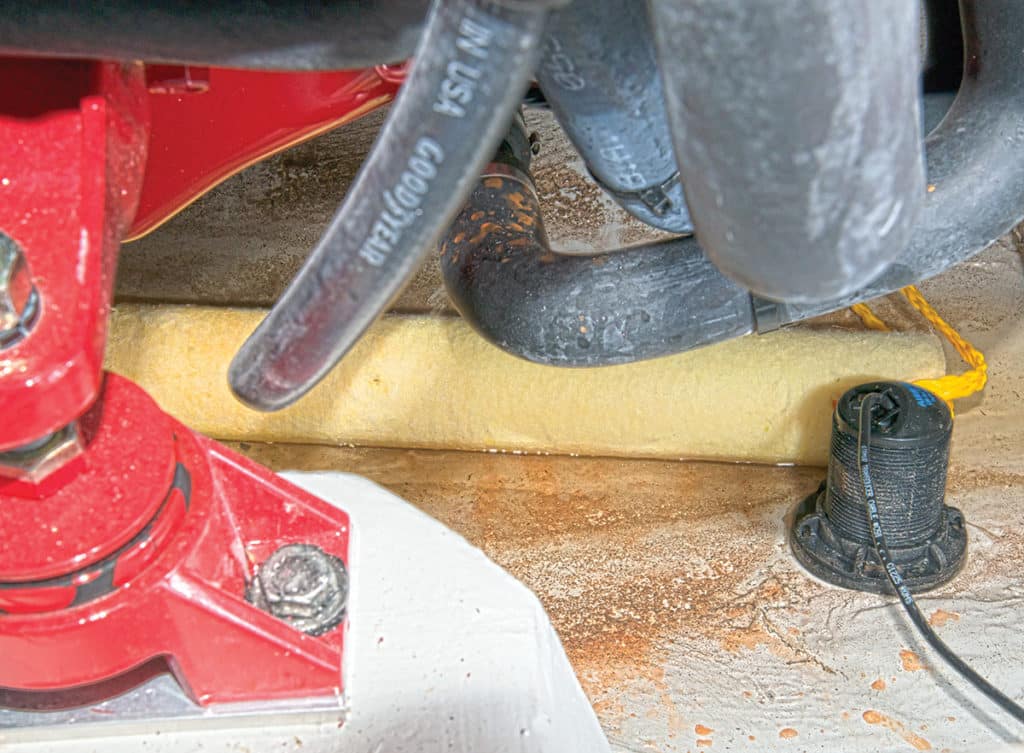
Every Boater’s Nightmare — Gasoline in the Bilge
There’s a reason gasoline trapped in your bilge is so dangerous. “It’s not the liquid that burns, it’s the vapors,” explains Bill Burket, who oversees emergency operations for Virginia Port Authority and is a boater himself. He says that when gasoline freely evaporates into the air, it’s less dangerous than when fumes are trapped and collect.
What do you do if it happens? “Open whatever hatches you can, get off the boat and call 911,” Burket says. Turn off automatic bilge pumps and main battery switches only if it’s safe. “If they’re in the bilge area or in the cabin and it smells like gas there, don’t mess with them,” he adds.
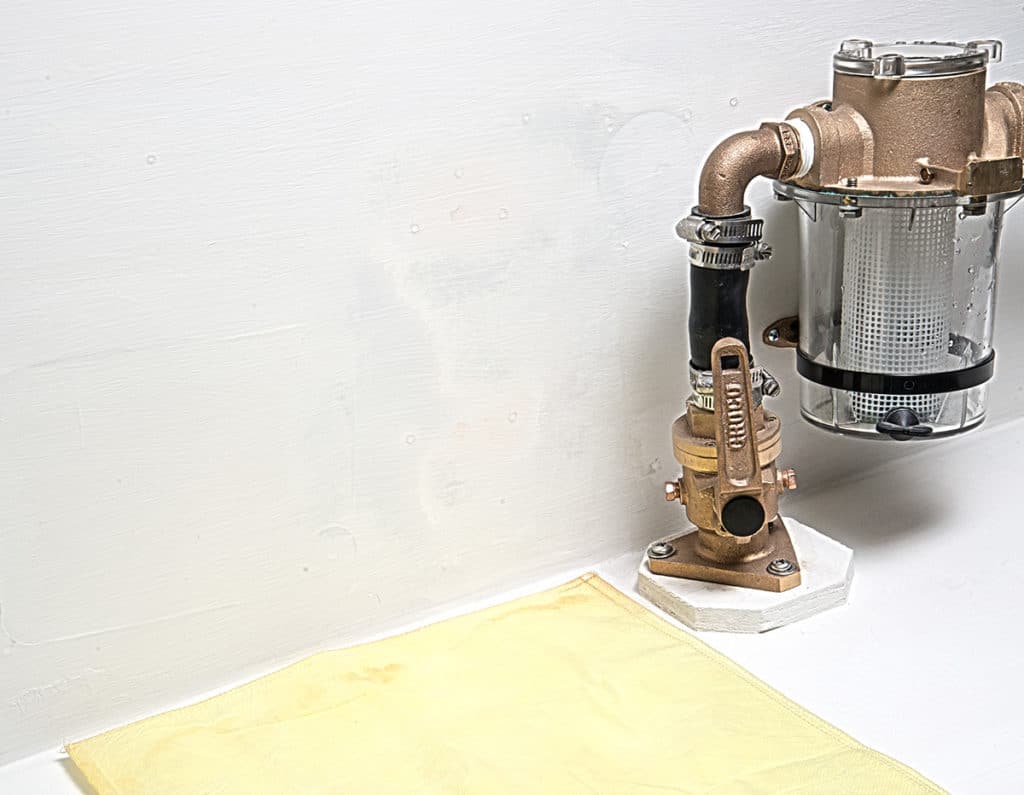
For gas in the bilge while underway, turn off engines and generators, open hatches and don’t use anything electronic. “If you don’t smell gas up on the flying bridge or on the bow, you’re OK to use a radio or cellphone to call for help.” Burket says. Dropping an anchor — manually, not with the electric windlass — might keep fumes aft to make this safer.
When help arrives, get off the boat and let an assistance towing company tow it home. “A fireboat might meet you offshore,” Burket says. “They can put firefighting foam in the bilge, which greatly reduces explosive vapors, just like the fire department can at the dock.”
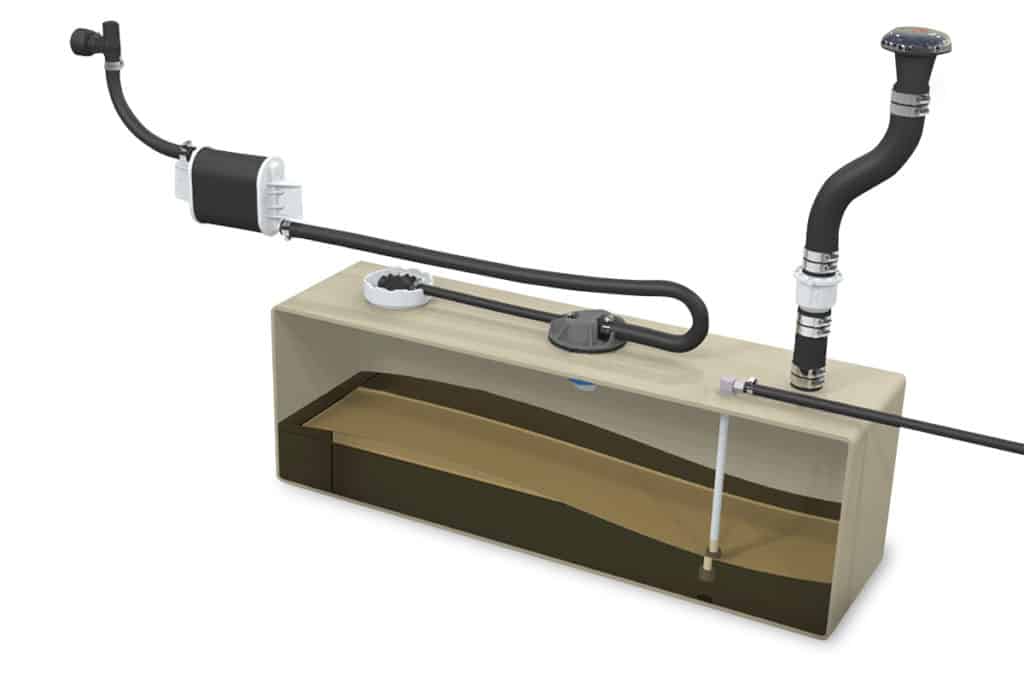
New Boats, New Systems
To meet new Environmental Protection Agency requirements that limit fuel vapor emissions and prevent fueling accidents, most new boats with fixed fuel tanks include valves on tank vent hoses and fuel fills. “When liquid fuel reaches the vent or the fill, those valves shut instantly. That triggers the fuel nozzle to shut off, just like when you’re fueling your car,” says Dave Walsh, marketing manager of Attwood Marine.
Attwood’s system handles a fill rate of up to 18 gallons per minute without tripping shut until the tank is full. Topping off after that risks disgorging fuel back through the fill, and repeated topping off might also damage carbon canisters that scrub gasoline fumes from vent lines.



